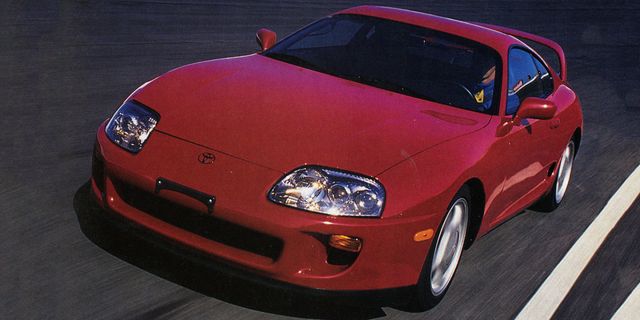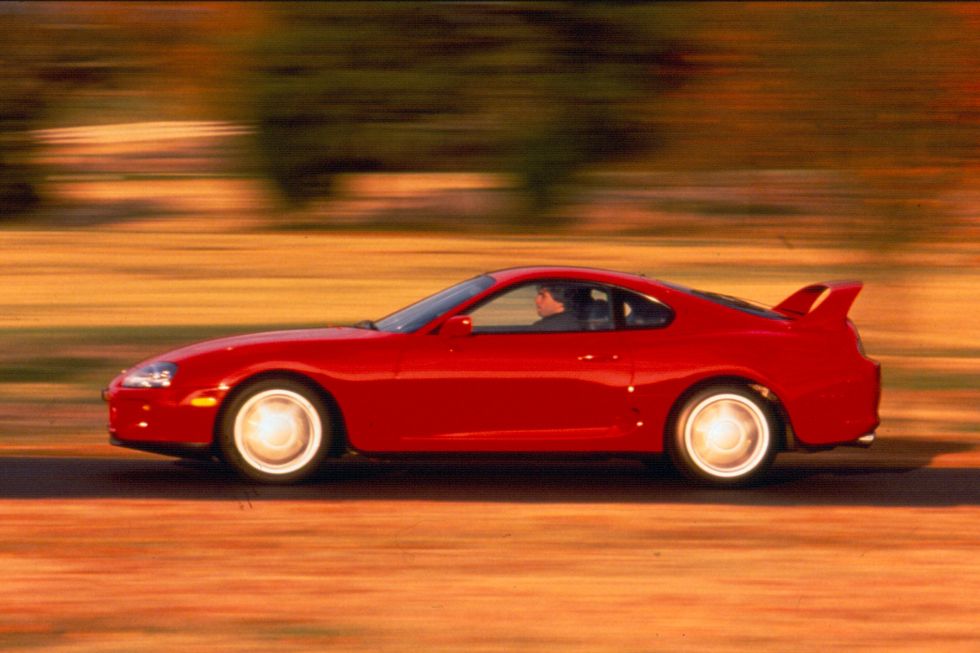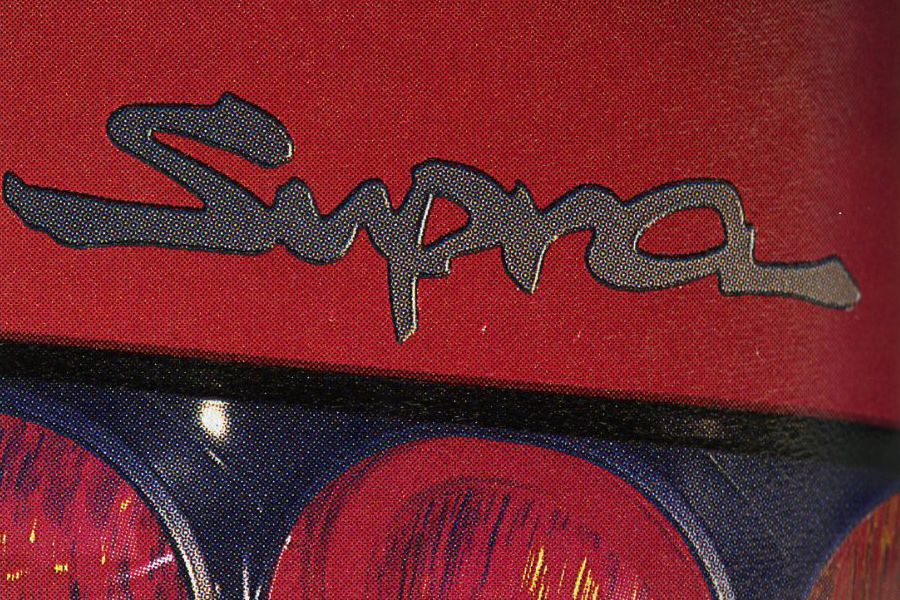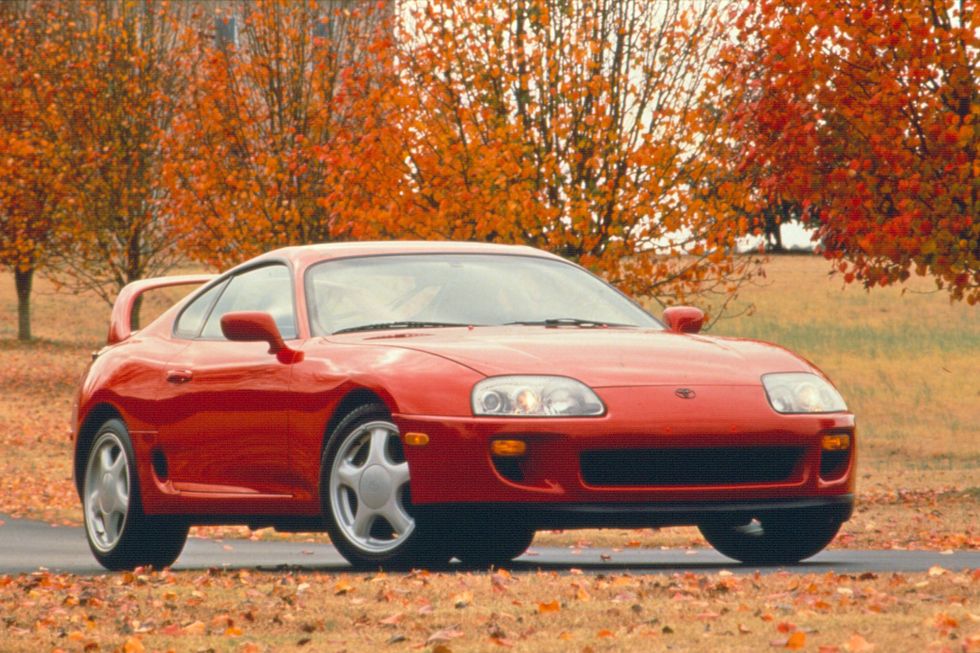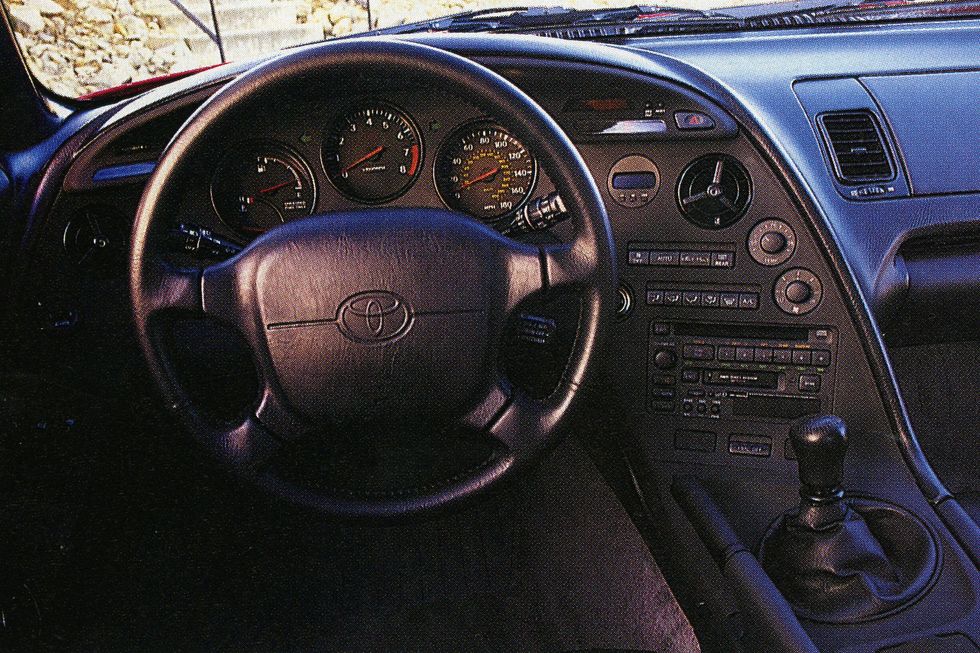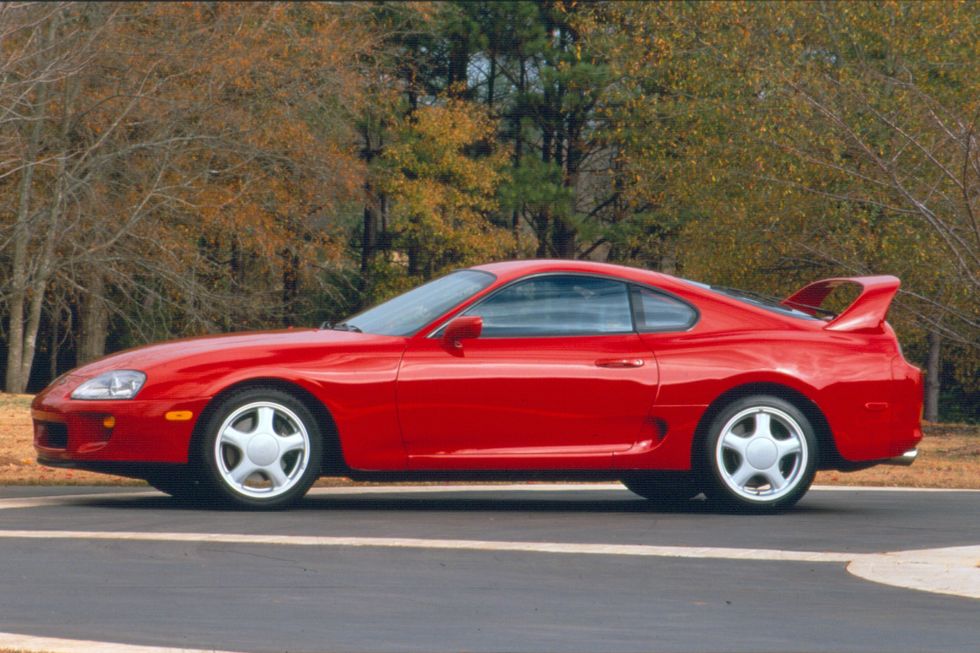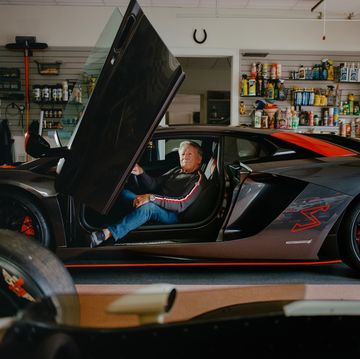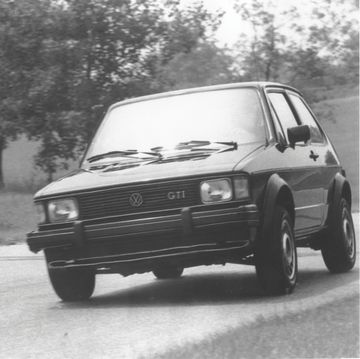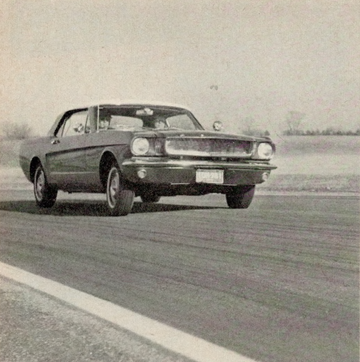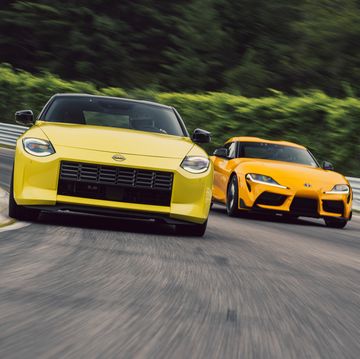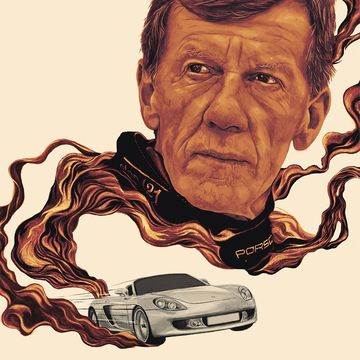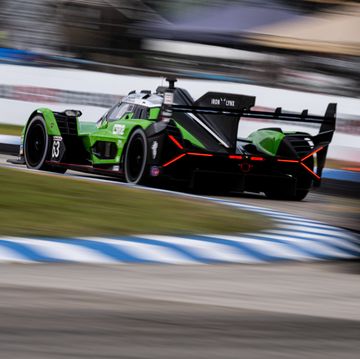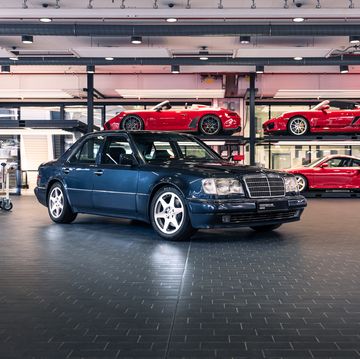Roughly 40 times year a brand-new car lands in our laps to be driven, tested, photographed, its details dissected / and then finally judged as a success, failure or also-ran. And just between you and me, I'd guess that in about half of these cases, we quietly wish the cars designers had asked us for a few opinions before they'd finished polishing the tooling.
This story originally appeared in the March 1993 issue of Road & Track. We're republishing it to remind you of how great the MkIV Supra is. Not that you forgot.
Mind, that's not to say we're a bunch of frustrated automotive engineers. We have trouble enough with our word processors, if you catch my drift. But after a few years, each of us has driven so many cars that, even if we don't notice wearing mismatched socks three days a week, we're hyper sensitive to the most minuscule automotive missteps— as well as the quiet touches of good design. Ah, if only they had come to us when the CAD screen was empty.
But for the Supra before you, Toyota not only asked, they listened. Two years ago, Toyota's product-planning staff assembled batches of magazine folks, me included, buckled us into every significant sports car then available, from the Porsche 944 to the Acura NSX, and then picked our brains with a scalpel.
What is a sports car? What makes it fun or romantic, good-looking, sensitive to the palms of your hands and balls of your feet? Flow should it make you feel?
Then they disappeared and the rumor mill fired up. The new Supra was a disaster, we heard. At one point it was even believed to have been abandoned.
Pulling through the gates of Atlanta Motor Speedway, nerve center for the Supra's introduction, I was wedged into a bus loaded with car-magazine writers, a couple of whom had also been part of Toyota's research panels. Naturally, I was curious and a little edgy. Had we said the right things? In a few minutes would I be sitting tall because my two cents worth two years ago helped make a great car, or would I be slouching in my seat, disavowing any association?
We turned a corner and there it was, a husky-shouldered, squatting, angry-looking car with a big hungry face and, in the case of our test Turbo model, topped off with a towering Ferrari F40-ish rear wing that, by golly, looks as if it might be more than cosmetic (Toyota claims 66 lb. of downforce at 90 mph— a useful quantity).
At least visually, this is not the car I had instructed them to build. Draw up a hairy-chested modern roadster along the lines of an updated big Healey or even an E-Type, I'd said. Evidently they didn't write that suggestion down, but the Supra they've come up with instead certainly is a raucous contender that will have no trouble elbowing itself up to the table alongside Nissan's 300ZX, Mazda's RX-7 and Mitsubishi's 3000GT (see accompanying story).
When you finally spot the car on the streets (start looking in June), walk around it quickly and see if you don't agree with me that it seems quite different from its photographs. A picture, naturally, captures just one perspective at a time.What's odd about the Supra is that its appearance seems to vary sharply with different perspectives. Some I like, some I don't.
A few of my strongest opinions: The nose is a grand slam. Topped by two big glaring exposed headlamp lenses shrouding triplets of nasty laser like lamps (high and low beam, plus fog penetrators), it provides a forceful, wide-eyed visage guaranteed to provoke double takes in many a rearview mirror. And these lamps are effective too, Toyota assures us, capable of illuminating more asphalt than any other car on the market.
Below them is a big rectangular air intake flanked by curling side nostrils with bullet turn indicators nestled in their comers. Sinister. Intentionally, all three openings are without grilles— you can plainly see the radiator and ad hoc hoses plumbed here and there. It's not exactly pretty, but it's good, strong stuff; just what a sports-car's face should be. Likewise, the big rounded rear-wheel arches telegraph rear-drive horsepower in no uncertain terms. And from there, they pinch back neatly into a narrow tail studded with packed quartets of tiny taillights. It's a unique, tense look that draws a long stare and a longer second look. A sports-car's styling should do that too.
What's between the car's ends is less convincing. The shapes are curvaceous in Toyota's typical way that relies on big radiarcs that frequently compound from convex to concave and back again. Here and there are reminders of the MR2 and Celica, for example. And maybe there's also some Honda Prelude sprinkled into the shape of the car's side window glass.
But some aspects of the body shape simply fall flat: The side scoops carved into the rocker panels look obviously tacked on, and dump air only into the rear wheel wells, lacking the ducting needed to cool the brakes. And from nearly any vantage, the proportion of roof, pillars and glass above the fenders and door tops looks undersized. As though the upper half of the car was drawn in three-quarter scale. They don't match, to my eye; and other staffers concur.
Likewise, the cockpit is a mixed bag. Three big gauges (speedometer, tachanda combination of temperature and fuel needles) are bright and canted directly at you, but oil pressure and temperature data are no-shows. The instrument pod seems excessively hooded, and the center console is angled toward the driver so much that snagging reverse in our test car (to the right and back) can pinch your fingers. The oddest aspect of the design, in my opinion, is the rather featureless, wraparound panel that holds the gauges, radio and ventilation controls (and these not too well organized). It seems almost unfinished, as though the interior styling guys just ran out of time.
Styling controversy is skin deep, however. A few millimeters beneath the Supra's controversial exterior are the mechanical specifications of a romping, stomping, nonnegotiable sports-car success. Twist the ignition key.
A quick whir of the Turbo version's starter and 320 horsepower throb to life. Now we're talking.
Like every Supra before it, its engine is a classic inline-6, in this case a freshly redesigned 3.0 liter with double cams and four valves per cylinder. The non-turbo version (already employed in the Lexus SC 300 and GS 300 sedan) punches out 220 bhp at 5800 rpm and 210 lb.-ft. of torque at 4800
rpm. It's as smooth, flexible and willing an engine of this size as you'll find.
Coupled to it is either a velvety-shifting Toyota-designed 5-speed manual or 4-speed automatic.
The intercooled turbo version generates an added 100 horsepower at 5600 rpm and 315 lb.-ft. of torque at 4000 rpm.
Listen up. This is quite an engine. Like the Mazda RX-7, it's blown by twin but sequential turbos, meaning only one is employed up to 3000 rpm for quick response. As the revs climb past this, the second turbo begins idling and then ladles in its share of boost as 3500 rpm sweeps around the dial. I found the transition to be utterly seamless, with the turbo's presence first felt at 2500 rpm and an extra punch of power arriving at about 4800. From there, the engine whistles up to its 6800-rpm redline freely enough to keep the rev limiter liberally exercised. Stab the throttle at cruising speed and the small turbos certainly spin up responsively, but I would guess that it takes three-quarters of a second for their full pressure to arrive.
Unlike the normally aspirated Supra, the Turbo offers two intriguing transmissions: a 6-speed manual de signed by Getrag and Toyota, and a 4-speed automatic allowing manual shifting that, for a change, feels akin to manual shifting. Just press a button adjacent to the shifter, and shift times are reduced 30 percent. However, I'd strongly recommend the 6-speed manual. Not only are this transmission's throws short (I measured about 4 in.), but its action is Miata-light as well. It's the kind of box you find yourself shifting up and down along a straight road, just for fun. My only criticism is that I did notice some rubber-banding as I got on and off the throttle tooling along in the middle gears.
But then why get on and off the throttle when you can keep it pressed down and thunder to 60 mph in 5.0 seconds? Nice round number, five seconds. And bettered in our Road Test Summary by only the Dodge Viper, Ferrari's 512TR and F40, the Lamborghini Diablo, Shelby's 427 Cobra and the Vector W8 TwinTurbo. Average price: $36,917. At approximately $38,000 for the Turbo (and about $32,000 for the naturally aspirated version), it doesn't take a mathematician to figure out that the Supra Turbo is one of car-dom's biggest bangs for the buck. To underline the point, although the Supra is speed-limited to 155 mph, Toyota assured us that it can threaten 180.
Of course, sprint speed has as much to do with reducing weight as adding power, and so Toyota has gone to work on the Supra's problem waistline. At the introduction, for example, they showed us how bolt heads have been dished, the optional rear wing has been molded with tiny air-filled glass spheres, and the carpeting's fibers have been formed in hollow strands. In deed, there's even a single exhaust system to trim pounds (resulting in a tailpipe big enough to swallow a Coke can, which a few staff comedians demonstrated). And it helps, with the Supra Turbo weighing in at 3450 lb. Not bad considering its size and content, but this is still a hefty chunk of car.
Suspension is by double A-arms up front (mounted to a lovely ribbed aluminum crossbeam), and at the back, an upper A-arm, twin lower lateral links plus an angled trailing link per side. Brakes are huge, 12.7 and 12.8 in. (front and rear, with the former ex haling heat through spiral internal fins). And finally, the tires are likewise substantial, sized 235/45ZR-17 front and 255/50ZR-17 rear (the non-turbo's are a smidgen smaller: 225/50ZR- 16 front and 245/50ZR-16 rear).
On paper, the right parts and the right size, but what happens at the track? How about 0.98g around the skidpad, 66.0 mph through the slalom and stopping distances from 60 mph on the order of 120 ft. Like the Supra Turbo's acceleration, its handling and braking prowess are close to the best we've ever seen, regardless of cost.
Exciting stuff, but...let's calm down for a second and note a few counter points. One, the tires are sticky (we noticed pebbles spraying up into the wheel wells at slow speeds) and so may not last more than a few oil changes. Second, the ride quality, while delightful on a test track, is stiff over real roads—say, a little smoother than the RX-7's and similar to the 300ZX's. The handling, while breathtaking at times with micrometer-precise steering, doesn't have quite the feedback I relish in cars like Porsche's 968. And around Atlanta Motor Speedway's in field road course, the Turbo's power exiting corners could easily scoot the tail out twice as far as I had guessed it was likely to drift.
So, is the Supra what I told Toyota to build two years ago? Maybe it's fortunate they resisted my lobbying for another big Healey. Plenty already exist. But a Supra with this magnitude of road-rocket performance could be history in the making.
